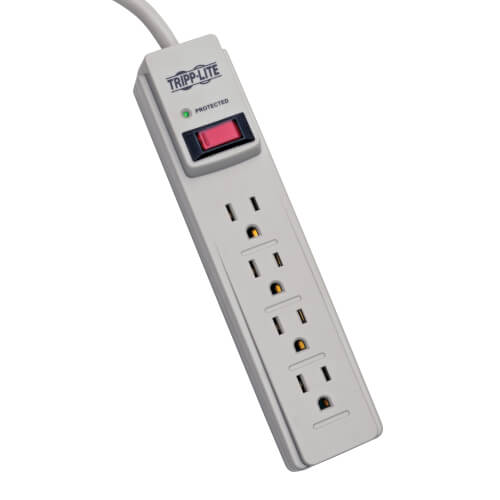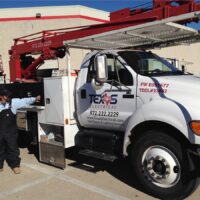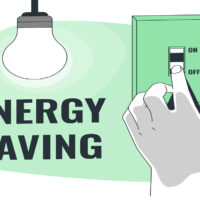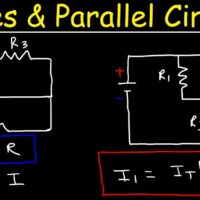A surge protector safeguards electronic devices from voltage spikes. It prevents damage by blocking or shorting excess voltage.
Surge protectors are essential for maintaining the longevity of your electronic devices. They work by diverting excess voltage away from your gadgets, which can otherwise cause irreversible damage. This is particularly important for sensitive electronics like computers, televisions, and home theater systems.
The investment in a good surge protector can save you from costly repairs or replacements. Quality surge protectors come with various features, including multiple outlets, USB ports, and even indicator lights. By incorporating a surge protector into your setup, you add an extra layer of security, ensuring the stability and safety of your valuable electronics.
Importance Of Surge Protectors
The importance of surge protectors cannot be overstated. They safeguard our valuable electronics and ensure safety from electrical hazards. Surge protectors are essential in every household and workplace.
Protecting Electronics
Surge protectors shield your electronics from power surges. A power surge can damage your devices. This includes computers, televisions, and refrigerators.
Power surges occur due to lightning or electrical faults. Without a surge protector, these surges can destroy your gadgets. Surge protectors absorb the excess voltage and keep your electronics safe.
Using a surge protector prolongs the life of your devices. It also saves you money on replacements and repairs.
Preventing Electrical Fires
Surge protectors also help in preventing electrical fires. Electrical fires can start from overloaded circuits. A surge protector can prevent this by regulating the flow of electricity.
When a surge occurs, the surge protector cuts off the excess voltage. This action prevents overheating of wires and outlets. Overheating is a common cause of electrical fires.
Using surge protectors adds an extra layer of safety. This is crucial in homes with many electronic devices.
| Benefits of Surge Protectors | Description |
|---|---|
| Protects Electronics | Shields devices from power surges |
| Prevents Electrical Fires | Stops overheating and potential fires |
| Saves Money | Reduces costs on repairs and replacements |
- Prolongs the life of your electronics.
- Ensures safety from electrical hazards.
- Cost-effective solution for protecting devices.
Invest in a quality surge protector today. Keep your home and gadgets safe.

Credit: tripplite.eaton.com
Types Of Surge Protectors
Surge protectors are essential for safeguarding your electronics. They protect against power surges and voltage spikes. There are different types of surge protectors to meet various needs. Here, we will explore the most common types: power strips and whole-house surge protectors.
Power Strips
Power strips are the most common surge protectors. They are affordable and easy to use. These devices plug directly into a wall outlet. They have multiple outlets for your devices. They can protect your gadgets from small surges.
Features of Power Strips:
- Multiple outlets for various devices
- Compact and portable
- Basic surge protection
- Easy to replace
Power strips are perfect for small electronics. They are ideal for computers, TVs, and gaming consoles. They offer basic protection, which is better than no protection at all.
Whole-house Surge Protectors
Whole-house surge protectors offer extensive coverage. They are installed at your electrical panel. They protect all the devices in your home. These protectors handle large surges, such as those from lightning.
Benefits of Whole-House Surge Protectors:
- Comprehensive protection for all devices
- Handles large power surges
- Long-lasting protection
- Protects hard-wired appliances
Whole-house surge protectors are a wise investment. They ensure the safety of all your electronics. They are crucial for homes with valuable devices and appliances.
Choosing the right surge protector depends on your needs. Power strips are great for small setups. Whole-house protectors offer extensive coverage. Protect your electronics with the right surge protector.
Key Features To Look For
Choosing the right surge protector is crucial for your electronics. Here are the key features you should consider to ensure maximum protection and efficiency.
Joule Rating
The joule rating measures the energy absorption capacity of a surge protector. A higher joule rating means better protection for your devices. Look for a surge protector with at least 600 joules for basic protection. For heavy-duty electronics, aim for a rating of 1000 joules or more.
| Joule Rating | Protection Level |
|---|---|
| 600 – 1000 | Basic |
| 1000 – 2000 | Moderate |
| 2000+ | High |
Clamping Voltage
The clamping voltage indicates the voltage level at which the surge protector activates. A lower clamping voltage offers better protection. Look for a clamping voltage of 400V or less to protect sensitive devices. Lower clamping voltage means less risk of damage to your electronics.
- Clamping Voltage ≤ 400V: Ideal for sensitive electronics
- Clamping Voltage ≤ 600V: Suitable for most home appliances
- Clamping Voltage > 600V: Basic protection
Understanding these features helps you choose the best surge protector for your needs. Protect your devices by considering both joule rating and clamping voltage.

Credit: www.cdw.com
Installation Tips
Installing a surge protector correctly ensures the safety of your devices. Follow these tips to get the best protection. Correct installation can extend the lifespan of your electronics.
Choosing The Right Location
Place the surge protector near your devices. Avoid areas with high moisture. Wet areas can cause damage and reduce effectiveness.
Keep it away from heat sources like radiators. High temperatures can damage the surge protector. Ensure easy access for plugging and unplugging devices.
Use the surge protector only indoors. Outdoor use can lead to malfunctions. Keep it away from direct sunlight. Sun exposure can degrade the materials.
Proper Grounding
Ensure the surge protector is properly grounded. This prevents electrical hazards. Check the outlet for a ground connection. A grounded outlet has three holes: hot, neutral, and ground.
Use a circuit tester to verify grounding. Follow these steps:
- Plug in the circuit tester.
- Read the indicator lights.
- Confirm a proper ground connection.
If the outlet is not grounded, contact an electrician. Improper grounding can lead to device damage. Do not use ungrounded outlets with surge protectors.
For extra safety, consider a whole-house surge protector. This device protects all outlets in your home. Consult a professional for installation. Whole-house surge protectors offer maximum protection for your electronics.
Maintenance And Replacement
Surge protectors are essential for safeguarding your electronics. Proper maintenance and timely replacement ensure continued protection. In this section, we will explore how to maintain your surge protector and identify when it needs replacing.
Regular Inspections
Regular inspections help keep your surge protector in good condition. Schedule monthly checks to examine your device. Look for any visible damage. Ensure all plugs and cords are secure.
Use a checklist for your inspections:
- Check for frayed cords
- Inspect the power switch
- Look for burn marks
- Test all connected devices
Signs Of Wear And Tear
Recognizing signs of wear and tear is crucial. These signs indicate that your surge protector may need replacement. Look for the following:
| Sign | Description |
|---|---|
| Burn Marks | Black or brown marks on the device |
| Frayed Cords | Cords with visible damage or splits |
| Loose Connections | Plugs that do not fit snugly |
| Unusual Smell | Burning or chemical odor |
| Frequent Tripping | Protectors that trip often |
Important Note: Replace your surge protector if you observe any of these signs. A damaged surge protector cannot fully protect your devices.
Common Mistakes To Avoid
Surge protectors are vital for safeguarding your devices from power surges. Yet, many people make mistakes that compromise their effectiveness. Understanding these common mistakes can help you avoid them.
Overloading Outlets
One common mistake is overloading outlets. People often plug too many devices into one surge protector. This can lead to overheating and potential fire hazards.
Follow these tips to avoid overloading:
- Check the wattage rating of your surge protector.
- Distribute high-wattage devices across multiple protectors.
- Avoid using extension cords with surge protectors.
Using Damaged Protectors
Another mistake is using damaged protectors. A surge protector with frayed wires or broken parts won’t protect your devices.
Inspect your surge protectors regularly:
- Check for any visible damage or wear.
- Replace protectors with broken or exposed wires.
- Ensure the indicator light is functioning properly.
By avoiding these common mistakes, you can ensure your devices stay protected. Proper use of surge protectors is essential for safety and device longevity.
Integrating With Smart Home Systems
Smart home systems make life easier and safer. Integrating a surge protector can help protect your devices from electrical surges. This integration ensures your devices are safe and your home runs smoothly.
Compatibility
Many surge protectors now work with smart home systems. They can connect with popular platforms like Amazon Alexa and Google Home. This allows you to control them with voice commands or through an app.
Below is a table showing the compatibility of popular surge protectors with smart home systems:
| Surge Protector Brand | Amazon Alexa | Google Home | Apple HomeKit |
|---|---|---|---|
| Brand A | Yes | Yes | No |
| Brand B | No | Yes | Yes |
| Brand C | Yes | No | Yes |
Remote Monitoring
Remote monitoring lets you check the status of your surge protector from anywhere. This feature is very useful if you travel a lot. You can get alerts if something goes wrong with your electrical system.
- Receive notifications on your phone.
- Monitor energy usage.
- Turn off devices remotely.
Below is a sample code snippet for integrating a smart surge protector with a home automation system:
{
"surgeProtector": {
"name": "Living Room Surge Protector",
"status": "on",
"energyUsage": "150W",
"alerts": [
{
"type": "surge",
"timestamp": "2023-10-01T12:34:56Z"
}
]
}
}
Cost Vs. Benefit Analysis
Understanding the costs and benefits of a surge protector is important. This analysis will help you decide if it’s a good investment.
Initial Investment
The initial cost of a surge protector can vary. Basic models start at around $20. More advanced models can cost up to $100. These models offer extra features such as USB ports and higher joule ratings.
Buying a surge protector is a small upfront cost. Compare this to the cost of replacing damaged electronics. Your devices can be very expensive to replace.
Long-term Savings
A surge protector can save you money over time. It protects your electronics from power surges. Without protection, a power surge can damage your TV, computer, or other devices.
Consider the cost of replacing your electronics. A new TV can cost hundreds of dollars. Replacing a computer can be even more expensive. A surge protector helps avoid these costs.
| Item | Cost Without Protection | Cost With Protection |
|---|---|---|
| Television | $500 | $20 – $100 |
| Computer | $800 | $20 – $100 |
| Gaming Console | $300 | $20 – $100 |
As you can see, the initial investment is small. The long-term savings are significant. Protecting your devices is cost-effective.

Credit: www.amazon.com
Frequently Asked Questions
What Is A Surge Protector?
A surge protector is a device that shields electronics from voltage spikes. It prevents damage by diverting excess voltage.
How Does A Surge Protector Work?
A surge protector works by detecting excess voltage and diverting it safely. It uses components like MOVs to absorb surges.
Do I Need A Surge Protector For My Computer?
Yes, a surge protector is essential for computers. It prevents damage from power surges and prolongs the lifespan.
Can A Surge Protector Save Energy?
A surge protector itself doesn’t save energy. However, it can help prevent energy waste by protecting devices from surges.
Conclusion
Protect your electronics with a reliable surge protector. It’s essential for safeguarding against power surges and spikes. Investing in quality can save you money and hassle. Ensure your devices remain safe and functional. Choose the right surge protector for peace of mind and long-term protection.




